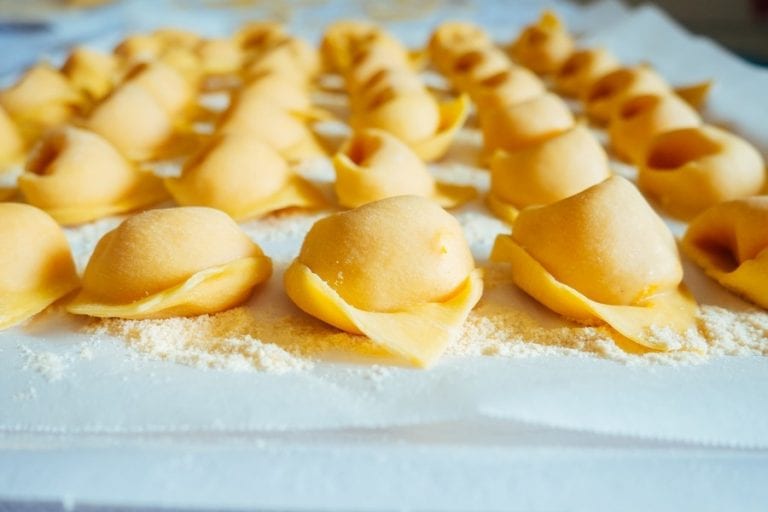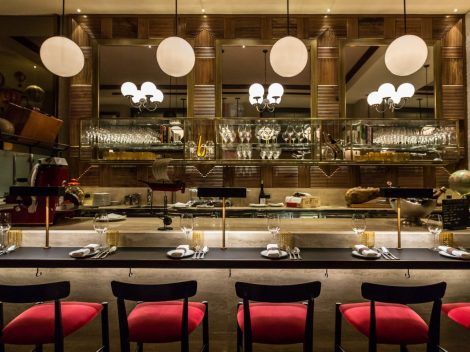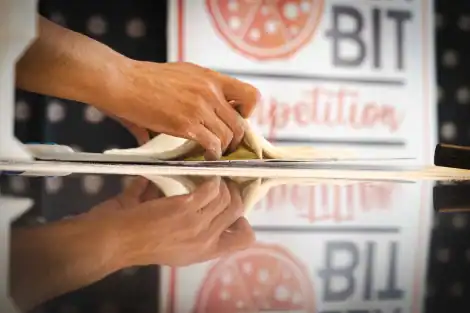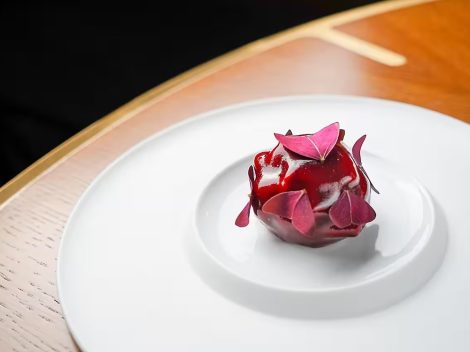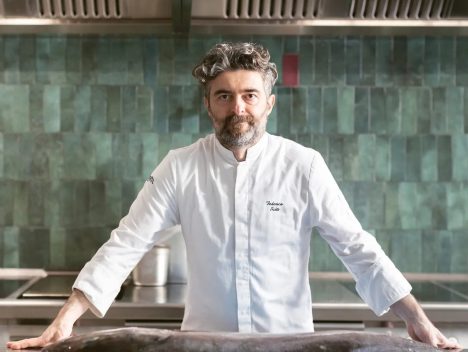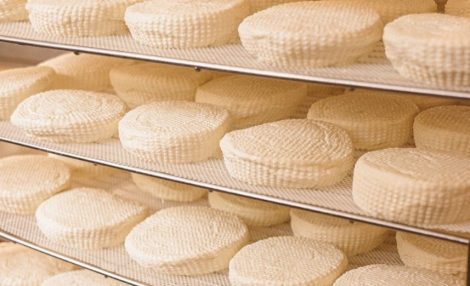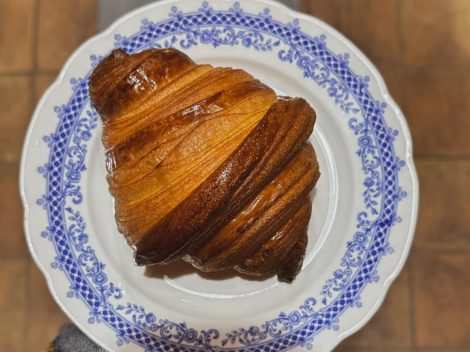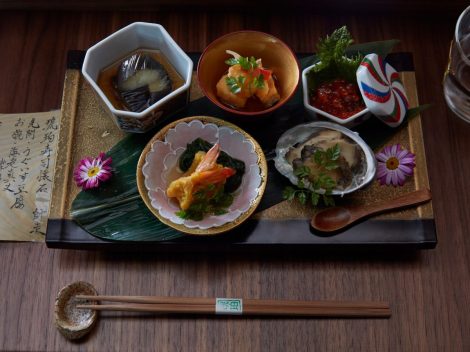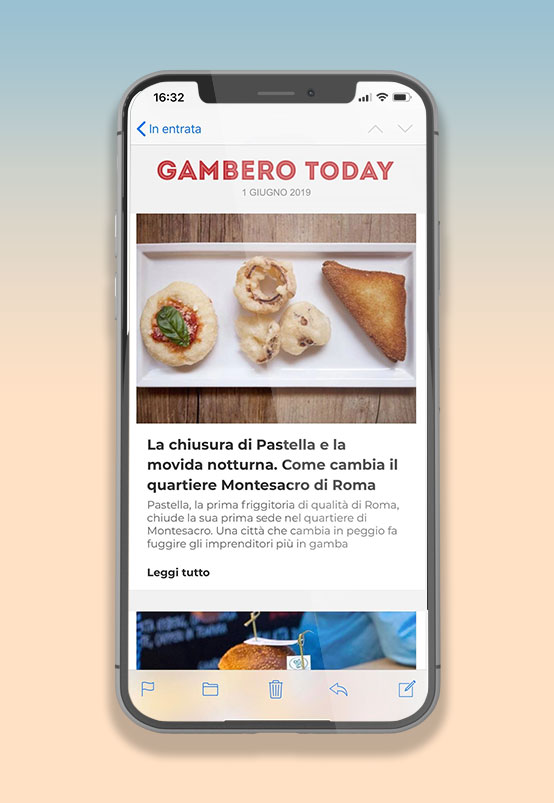This region above all others in Italy shows to be compact and unanimous regarding the quality of food and wine. Emilia-Romagna in fact currently boasts supremacy among the Italian regions by the number of specialties recognized under PDO and PGI status, 44 in all. This record-breaking richness is equally present in the region’s traditional home cooking. Today we present three recipes to replicate at home: Cappellacci di Zucca, Cotoletta alla Bolognese and Torta degli Addobbi.
Cappellacci di Zucca
A symbol of Ferrara's cuisine, Cappellacci di Zucca have an ancient history linked to the territory, so much so that they have earned PGI label. First written testimony of the recipe dates back to 1584, when Giovan Battista Rossetti, chef of the court of Alfonso II d'Este, published the recipe in his book Dello Scalco. He calls them “tortelli di zucca con il butirro” but the ingredients remain the same as in the current recipe, were not for the addition of some spices, such as ginger or cinnamon (being still intended for an elite). In regard to the name “cappellacci”, according to some historians, caplaz in Ferrara dialect, refers to the shape that vaguely resembles that of the typical straw hat of the Ferrara peasants, calledcaplaz. Others instead maintain that the stuffed pasta pockets are the Ferrara answer to Modena and Bologna-native cappelletti.
Ingredients for the pasta dough
300 g flour
3 eggs
Milk
Salt
Ingredients for the filling
1,5 kg Violino variety pumpkin
100 g Parmigiano, grated
1 tbsp. breadcrumbs
Nutmeg
Salt and pepper
Ingredients for the condiment
60 g butter
50 g Parmigiano, grated
Slice the pumpkin leaving the skin on, scoop out the seeds and fibres and place the slices on a cookie sheet. Bake in a 180° C oven for about 1 hour.
While the pumpkin cooks, sift the flour on a wood surface, shape into a volcano and drop in it the eggs, the milk and a pinch of salt. Knead to obtain the pasta dough, do this for approximately ten minutes.
Shape the dough into a ball, wrap it in a kitchen towel and allow it to rest for 30 minutes. la pasta a When the pumpkin is cooked and soft, allow it to cook, remove the peel and pass it through a food mill. Add the grated cheese, the breadcrumbs, nutmeg, salt and pepper and mix well with a wooden spoon. The obtained filling should be creamy but not too moist. If necessary, add more breadcrumbs to absorb any excess liquid.
Roll out the dough to a sheet (not too thin, if you’re using a pasta machine, roll it out to the fourth mark)
Cut 6 cm squares in the rolled-out pasta, at the centre of each scoop a ½ a tbsp. Of the filling and fold over diagonally to obtain a triangle. Crimp the edges to seal well (if necessary, wet the edges with water). Cook the cappellacci in a gallon of lightly salted boiling water, after 4-5 minutes fish them out with a slotted spoon. As you do this, layer them in a baking dish with butter and grated cheese. Serve immediately.
If any are left over, heat the cappellacci sautéing them in a pan over vivacious heat until they turn a dark golden colour.
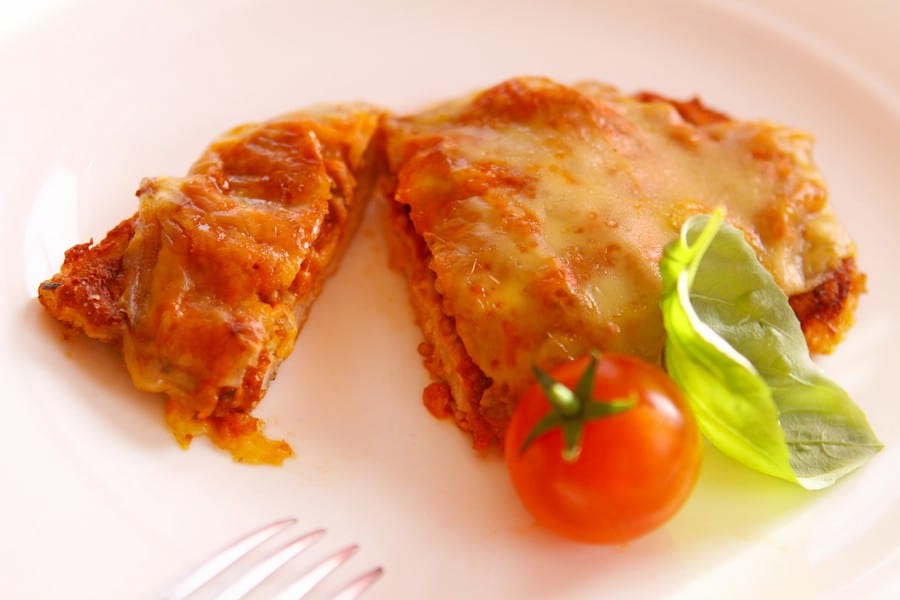
Cotoletta alla Bolognese
This is one of the oldest dishes of Bologna, so much so that the recipe was coded and deposited in 2004 by the Academy of Italian cuisine at the Chamber of Commerce of Bologna. The recipe we’re sharing here is slightly different from the original, which includes the use of broth (to further flavour the cutlet) and regular butter. Our version uses clarified butter, which eliminates the small percentage of water present, and furthermore separates the fatty part from the butter’s casein. In this way butter can withstand higher cooking temperature without burning. To clarify butter, place it in a saucepan en bain marie, that is in another pot filled half way with boiling water. Turn the heat to the lowest mark and melt the butter without ever stirring it. Once melted, take the pan off the burner and remove the foam floating on the surface with a spoon. Then slowly pour the remaining liquid butter in a bowl, carefully avoiding mixing the liquid part deposited at the bottom of the pan and which must be discarded. Well sealed and kept in the fridge, the clarified butter can last a couple of weeks.
Ingredients
4 slices of veal rump, weighing approximately 120 g each and 0,5 cm thick
80 g young Parmigiano
4 slices of mild prosciutto
80 g clarified butter
1 egg, beaten
100 g breadcrumbs
Remove any sinewy, fatty parts from the cutlets and pound them to even out the thickness. Dip them in the beaten gg and then dredge in breadcrumbs, pressing down to allow the crumbs to stick to the meat. Heat the butter in a wide bottomed pan and lightly brown the meat, about 5-6 minutes on each side, until they are a deep golden colour. Blot the grease by placing the cutlets on kitchen towel and place them in an oven dish, covering each with a slice of prosciutto and a few thin slices of tender Parmigiano.
Bake at 200° C for five minutes, or until the cheese melts.
When ready to serve, you can dust the cutlets with a few flakes of freshly shaved white truffle. For a more affordable version, smear each with a tbsp. of tomato sauce. But these are great as is, without any additional topping. Do not add salt: the ham and the cheese are sufficiently savoury.
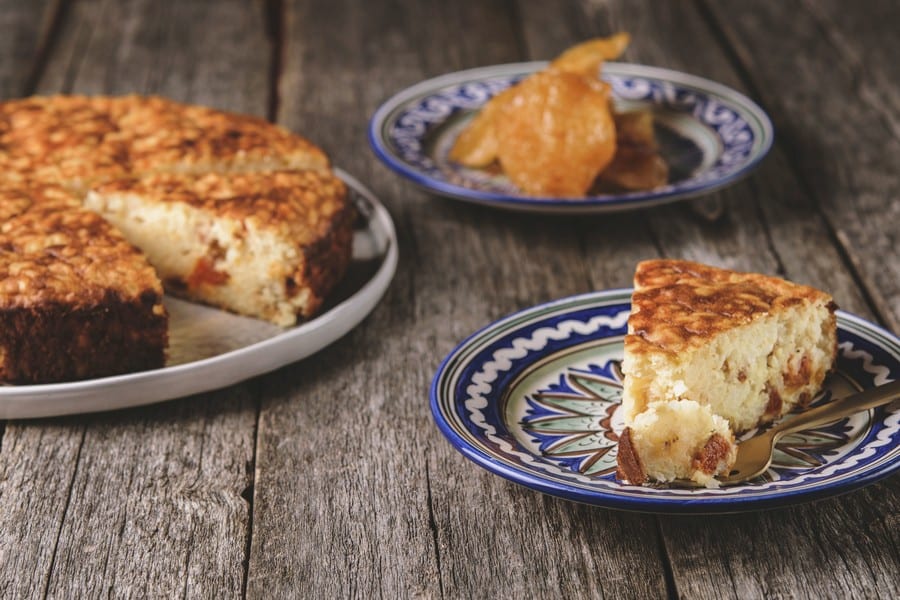
Torta degli Addobbi
This dessert commonly known as rice cake, was traditionally prepared during the Addobbi celebrations. These were religious festivals connected to the celebrations of Corpus Domini, during which people would hang colourful drapes at the windows. Even this recipe was deposited in 2005 at the Chamber of Commerce of Bologna, but obviously each family has its own version. Here is ours.
Ingredients
150 g common or semi-fine rice
1 l milk
150 g sugar
100 g peeled almonds
100 g candied citron
2 whole eggs and 2 yolks
4 amaretti biscuits
1 shot glass of liqueur (Amaretto, Rum, Galliano)
Zest of 1 untreated, organic lemon
2 tbsp. confectioner’s sugar
1 tbsp. butter
1 tbsp. breadcrumbs for the oven dish
Boil the milk in a heavy-bottomed saucepan, add the rice and sugar, cover with a lid and cook over mild heat for about 1 hour, stirring often.
To avoid the rice from sticking, add a flame diffuser under the pot.
Grind the almonds in a blender, crumble the amaretti biscuits and finely mince the candied citron. When the rice is cooked soft, remove from the heat and incorporate the ground almonds, amaretti, citron and lemon zest. Once cool, add one by one the yolks and the eggs, mixing well. Grease a rectangular 25x20 cm (or round 26 cm diameter) oven dish and dredge with breadcrumbs.
Pour in the rice mix, level and bake in the hot oven at 180° C for 1 hour, or until a golden crust forms. Remove from the oven, pierce the surface with a fork and pour the liqueur.
Once completely cooled down, seal with plastic wrap and refrigerate for 5 hours. When ready to serve, overturn on a serving dish, cut in lozenges and dust with confectioner’s sugar.

